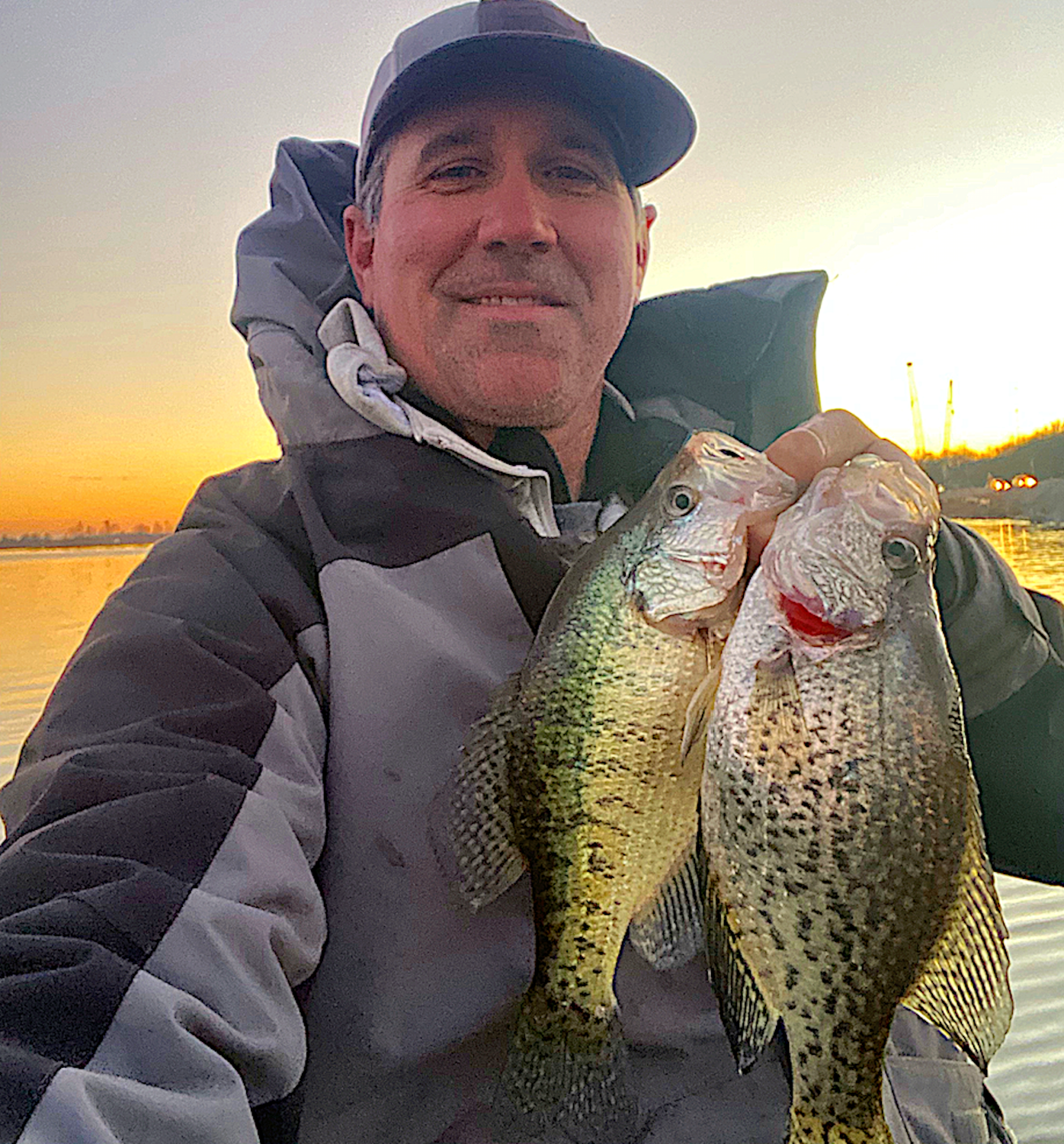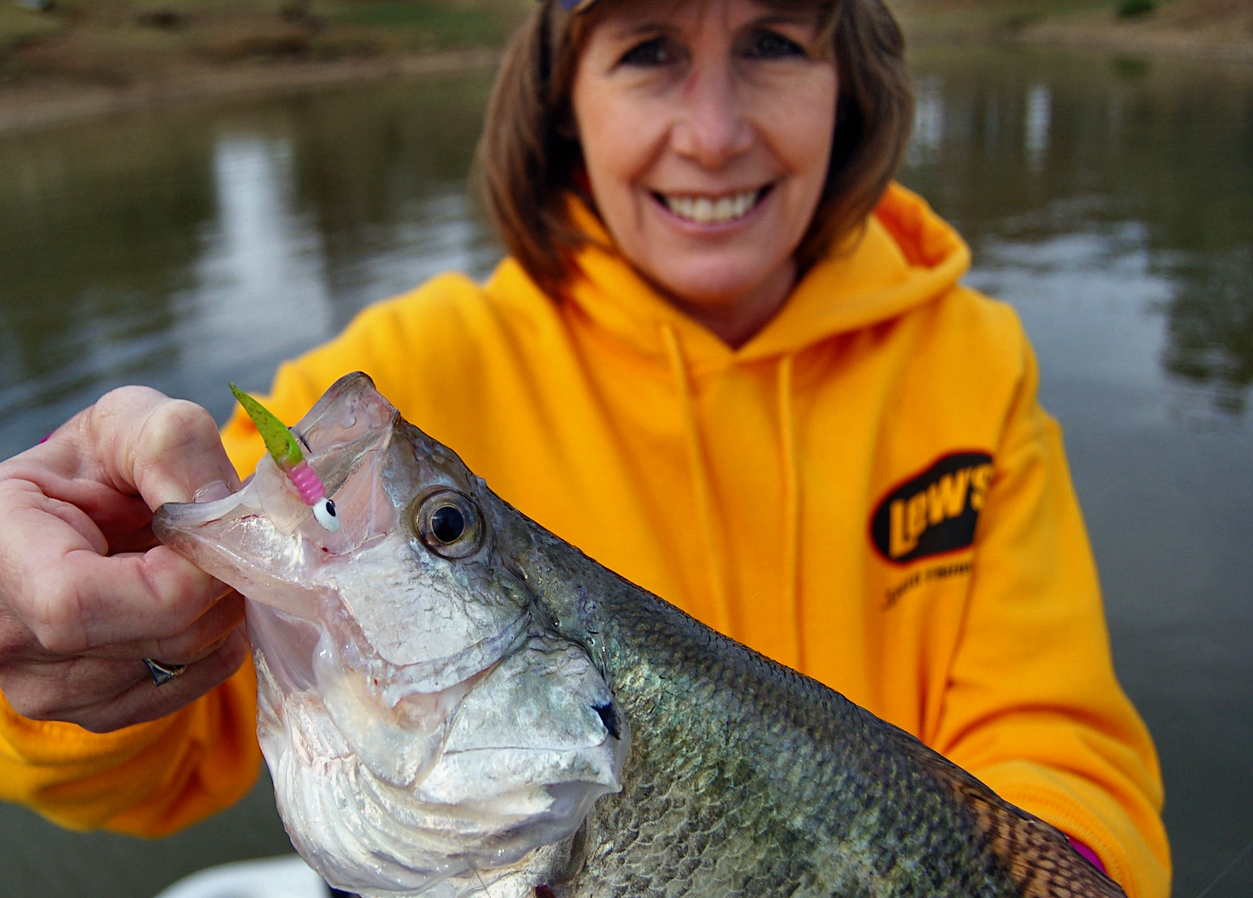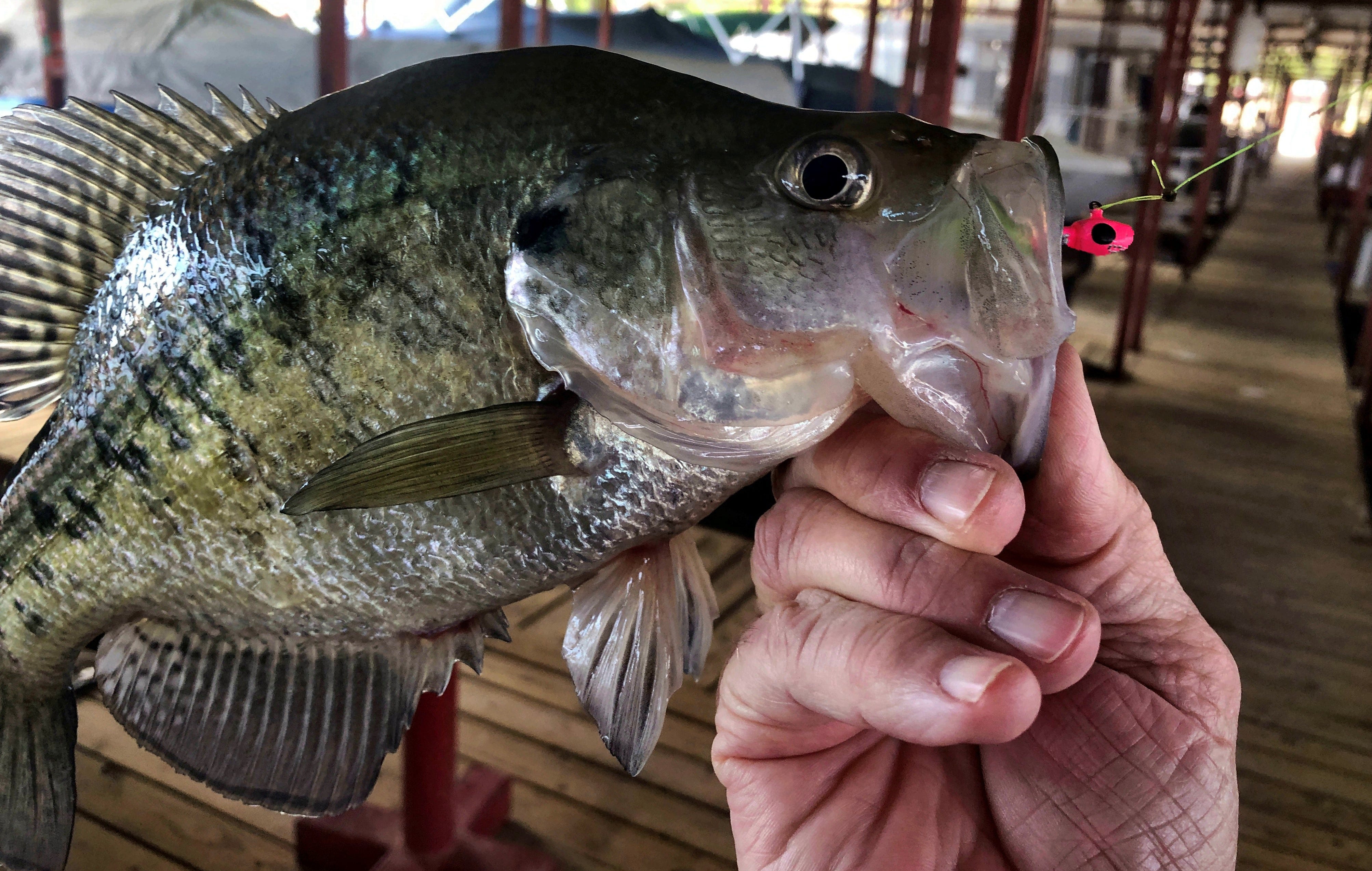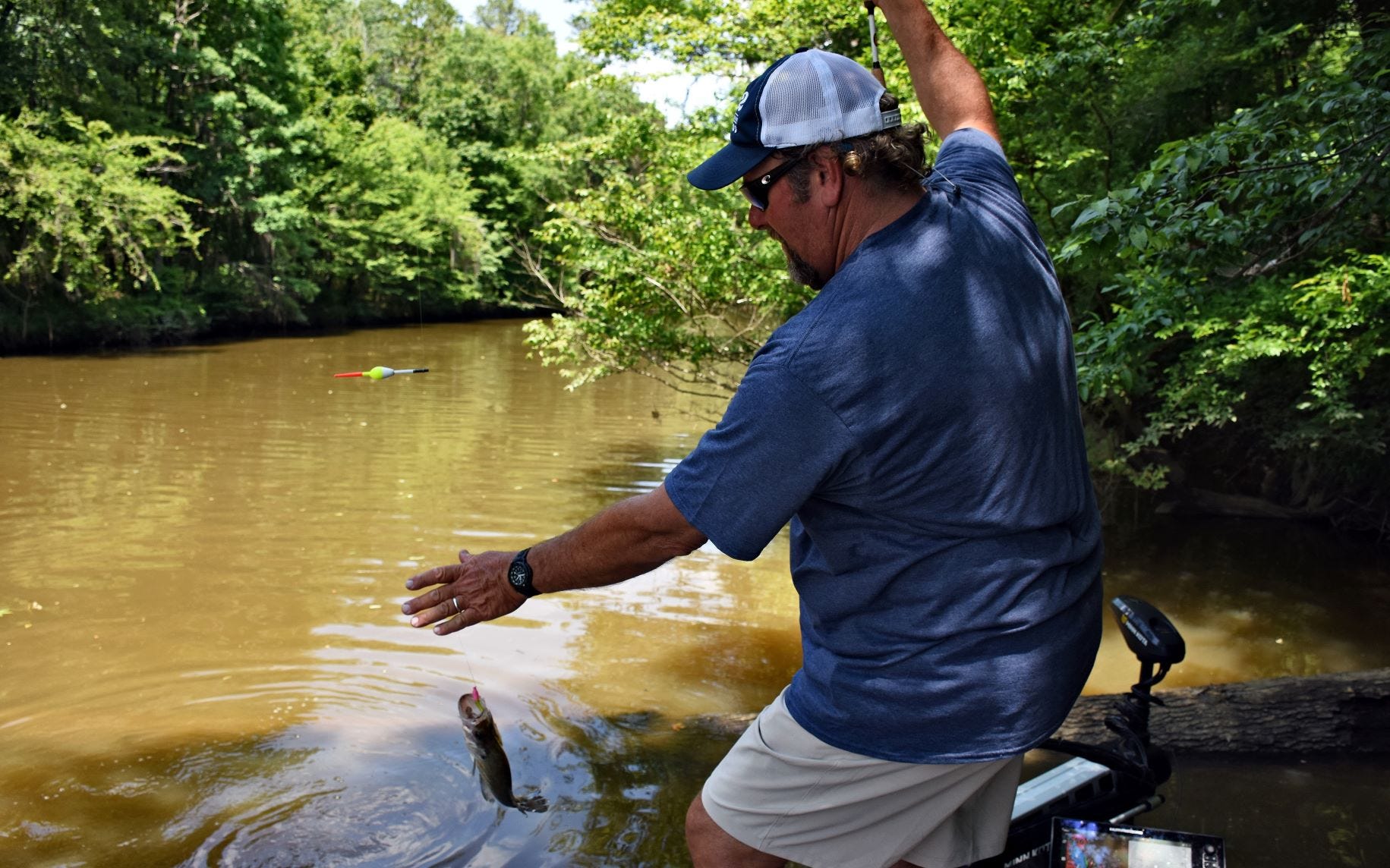- Apr 13, 2022
Understanding the Crappie Spawn
Learning more about spring crappie behavior related to the spawn can help you catch more fish.
The crappie spawn has major impact on fish behavior during spring and opens some of the year’s best opportunities for catching crappie from shallow water. Most anglers know that much. Where questions arise are with details about things like when the fish move up, how long they hang around, the types of areas they favor, and, consequently, how all that impacts spring crappie fishing strategies.
With such questions in mind, we turned to Josh Johnston, Fisheries Supervisor for the Oklahoma Department of Wildlife Resources, and Gary Dollahon, brand manager for Bobby Garland Crappie Baits. Significantly, both also speak from the perspective of being avid crappie anglers.
Crappie Spawn Timing


While everyone wants to know that “peak time,” Johnston noted that the opportunity to target spawn-oriented crappie in shallow water is substantially longer than many anglers realize. This is especially true for male crappie, which will move into potential spawning areas as soon as water temperatures hit the low 60s with some stability and will remain shallow throughout the spawning season, waiting for females to move up. Black crappie will begin spawning with 60-degree water. White crappie, a degree or two warmer.
Stability is a key word, regarding water temperature, Johnston stressed. If water temps are mostly in the high 50s but rise to 61 late on a sunny afternoon, that’s not going to be enough to move many fish. With a stable 60 degrees, some black crappie will begin spawning. When the temperature is stable at 62 or 63 degrees, opportunities tend to be really good.
The female crappie essentially move up, spawn, and move right back out, so finding them shallow is a bit more of a chance thing. That said, not all the crappie spawn at the same time, even in the same spot, so at least some females will be shallow on several different days during spring.
Further extending the window of opportunity, different parts of lakes warm up at different speeds. Dirtier water and broad shallow flats, often in the upper ends of reservoirs, often will be well ahead of deeper, clearer creeks in the same lake.
“On Lake Eufaula, for example, you have crappie spawning in dirty, shallow creeks as early as March, and a month and a half later the spawn could still be happening somewhere on the lake,” Johnston said.
Where Crappie Spawn


Johnston noted that different waters offer very different habitat, and the crappie will find a place to spawn, so not everything fits the classic scenario. Crappie in deep, clear lakes might spawn 10 or 15 feet deep, and some lakes simply don’t have the hard bottom areas or cover that the fish prefer.
That said, crappie seek places where their eggs have best opportunity to thrive. They often move into a creek arm, cove or pocket to avoid river currents and heavily windblown banks, and they avoid creeks that have heavy spring flows, where beds are apt to get blown out. For similar reason, they prefer rocky areas or hard sand bottoms, where there’s minimal risk of eggs getting fungus or being suffocated by silt.
If water levels in a waterway tend to be stable and the water isn’t super clear, crappie beds tend to be shallow, often in less than two feet. Within a spawning area, they seek hard cover, both to spawn on and for cover, whether that’s a stump, a dock support, a brushpile or standing timber. In many lakes, the crappie also make heavy use of vegetation for spawning.
Crappie Spawn Strategies


When Gary Dollahon targets crappie during the spawn, he breaks things into three primary situations and plans his lures choices and strategies accordingly.
Spawning Banks – Often, an excellent spring approach is simply to fish spawning banks – not necessarily hitting specific pieces of cover but fishing flats with hard bottoms in protected area, riprap banks or other areas where crappie will spawn. Whether they are feeding up just prior to the spawn or protecting nests, these fish tend to be aggressive.
Dollahon likes to cast baits and swim the through these areas and likes a bait that has a swimming tail to imitate a batfish and get the fish’s attention. Top picks include a Bobby Garland Stroll’R, Swimming Minnow, Hyper Grub and Slab Hunt’R, with the Hyper Grub getting the bid for the clearest water and the Slab Hunt’R for the dirty water that is common in shallow areas during spring. He generally favors bright colors for this situation and pointed toward Cajun Cricket, Bluegrass and Green Lantern as excellent options.
Docks – Dollahon also spends a lot of time fishing docks during spring. The fish will spawn on parts of the docks, including floats and the dock framework, but docks also provide critical cover for big female crappie that are staging just outside of bedding areas.
For dock fish, Dollahon typically turns to Bobby Garland Itty Bit Series baits, especially the Itty Bit Slab Slay’R, which he can drop straight down, with good control the presentation. Itty Bit baits match natural forage around docks, including insects and small minnows. That’s especially true in the morning because both minnows and insects tend to congregate in dock lights overnight. Two of Dollahon’s favorite colors for this approach are Electric Chicken and Bone White/Chartreuse, both of which offer good visibility in a broad range of water colors.
Nesting Cover – If Dollahon is in an area that has brush or other cover that he expects the crappie spawn on, he’ll target the spawners and nest guarders directly by dipping a bait in the cover. “I try to put it in the heart of the cover,” he said, noting that precise placement and control of the presentation results in far more fish.
For this approach, Dollahon’s bait of choice is a 3-inch Slab Slay’R. It’s a large bait that the fish can find and will react to close to cover, and its straight tail design aids the precision that is important for the best results. He wants plenty of color for this presentation and pointed toward Electric Chicken as an excellent choice.
Crappie Spawn Facts


- Crappie reach sexual maturity at age 2.
- Females lay as many as 60,000 eggs.
- Black crappie begin spawning slightly sooner than white crappie, water-temperature-wise.
- The same female sometimes will spawn more than once during spring.



